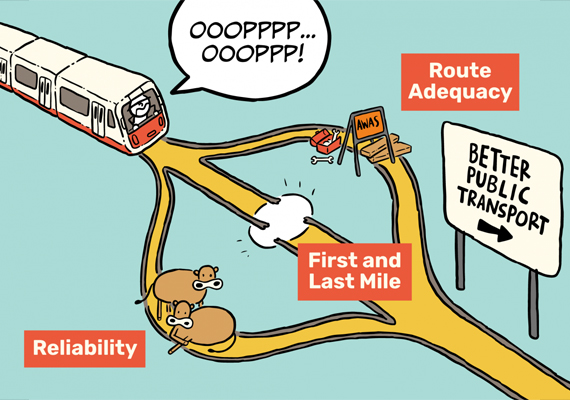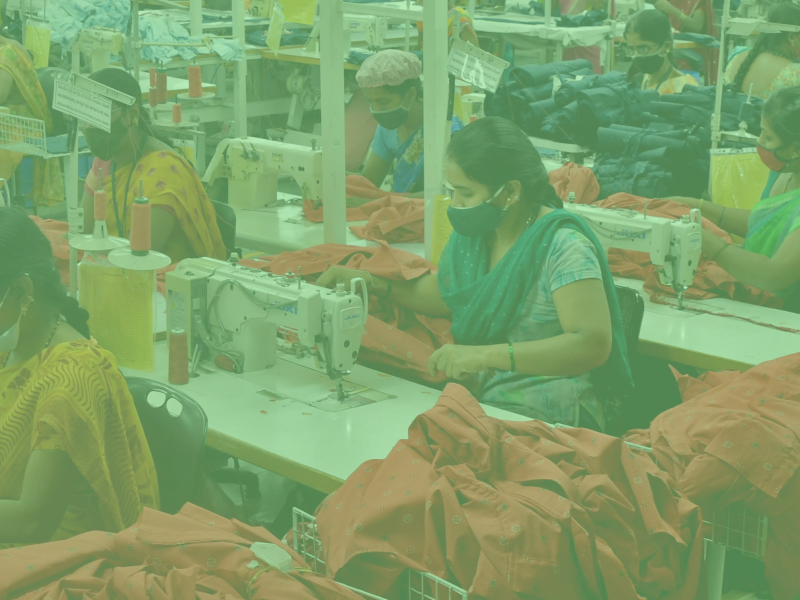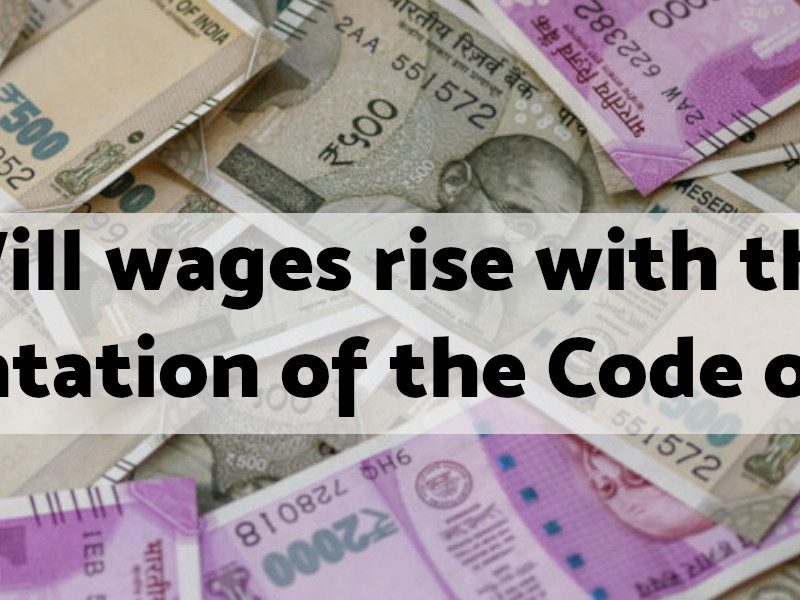K R Ushakumari rides a scooter, then rows a boat and finally treks 4 km up a forested mountain braving leopards and elephants to teach 14 adivasi children. The journey begins at 7:30 am and she reaches home only by 8 pm. Never a day late, she runs the single teacher programme for tribal areas started by the Kerala government and ensures the right to education of these children. She had no access to any public transport between her home and school for the last 17 years.
A public interest litigation in the Bombay High Court in 2014 sought to highlight the plight of 2,500 children from adivasi families in suburban Goregaon, who have to walk through forest, a national park, every day risking leopard attacks to reach their municipal school. The Brihanmumbai Electricity Supply and Transport (BEST) refused to provide buses on the route claiming that the road is not motorable. The PIL called for a right to public transport as a fundamental right to ensure the right to education.
In this context we need to be mindful whether providing public transport to students alone to is enough to ensure the right to education. Teachers and staff who run schools also need transport to ensure they reach these schools. Parents of children need access to transport to get to work so they can afford to send children to school.
The 7-day long strike of BEST workers of Mumbai in January this year provides us a case to understand the various challenges to ensure the right to public transport for all and the role played by the three main parties: the commuters, management and workers. On the fifth day of the strike, BEST management said they would have to hike bus fares by 50% to meet the union demand. The management however did not increase the fare, the other demands of the workers have also not been met.
Instead, on 25 June, BEST slashed bus fares across the board by 50%. Commuters were very happy. The number of passengers rose by 29% on the first day and by the first 10 days rose by 50% but BEST’s revenues slid by 31% on the first day.
Commuters
Transport Cost: Most of Mumbai’s working people, many of whom live in the city’s outskirts use the local train or public bus for transport. Bus ridership declined over time from 45 lakh passengers in 2005 due to increasing fares. This was revealed by the rise in number of passengers in buses after the BEST fare cut. Other cities also corroborate this fact. Interviews with workers in Chennai reveal that workers spend a quarter of their daily wages in commuting and in Delhi, 34% of the city’s population is unable to afford bus fare.
 Lack of Connectivity: Connectivity is how easily we reach the point of embarking the public transport and how we reach our destination after disembarking. A study done in Ahmedabad showed that 27% of the urban poor do not use public transport due to the lack of connectivity. In the same study, 60% of respondents complained that there are no bus stops in walking distance and 34% said they would shift to public transport if such was the case.
Lack of Connectivity: Connectivity is how easily we reach the point of embarking the public transport and how we reach our destination after disembarking. A study done in Ahmedabad showed that 27% of the urban poor do not use public transport due to the lack of connectivity. In the same study, 60% of respondents complained that there are no bus stops in walking distance and 34% said they would shift to public transport if such was the case.
Despite these difficulties, over 58% of commuter in our country use buses. This is because 9 in 10 Indians do not own a motor vehicle and 6 of whom commute to work. In urban centres, bus fares account for 58% of transport expenditure of all urban households and this amount increases, relatively and absolutely, the poorer the commuter is with the top 20% of commuters spend nearly a ninth of what the bottom 20% spends.
Despite wide usage of buses, they form less than 1% of vehicles on Indian roads. Both cars and motorcycles, the overwhelming bulk of vehicles on our roads, are less fuel efficient, more pollutive and occupy more space on a per passenger basis than buses. This composition of motor vehicles makes Indian urban spaces some of the world’s most polluted and congested. It also affects the performance of buses.
Privatisation: In 2012, most buses in India are privately run with less than 8% being publicly operated by the State Transport Undertakings (STUs). This was not always the case. In 1976, the share of STUs in operating buses had grown to over 45%. Reduced investment in STUs since the mid-1980s has ceded space to the private sector which not just charges commuters more, it also pays its workers less than the STUs.
Management
When cutting fares in June, the management of BEST management argued that it was done to compete with taxi services like Ola and Uber. This reveals that management has little understanding about its commuter base.
Set up in the 1950s and 60s, the State Transport Undertakings are bodies employing their own workers, collecting their own revenue and incurring their own expenditures. There are 54 STUs in the country today, most of which are loss making.
Price sensitive commuters: The BEST case is a clear case of why the STUs make a loss. Fare reduction expands the price sensitive commuter base but may affect total revenues. This means the lowest income commuter shifts from using the crowded trains to bus transport when there is a fare cut. It is not the commuter who takes a taxi that shifts. Thus the number swells considerably but the revenue collected may or may not dip depending on the reduction in fare and on the increase in number of passengers.

High Investment: Another factor is that in many Private-Public-Partnership models for STUs, STUs purchase the buses and then these are given to private operators to run. STUs account for a third of bus purchases in India though they operate only 8% of buses. STUs also have higher overhead costs than private firms due to investment in sheds, depots, maintenance and other facilities necessary to operate a bus transport system. In fact, STUs are often marked by insufficient investment in these facilities. Delhi for example needs 460 acres of land to accommodate its 5,583 STU buses but only 257 acres are available. Private operators on the other hand, often employ informal and unregulated firms to provide facilities and services, leech off the public sector or even at time encroach public land to park buses.
Populist measures of Government: When governments announce fare reductions or subsidised bus fares for some commuters like students, they often fail to transfer funds to STUs for many years. This issue was raised in Karnataka when transport workers unions demanded that the state government release Rs. 2,500 crore worth of subsidy relating to student fares. Many struggles between STUs and transport workers reveal a similar demand; for release of funds (Karnataka) and increased allocation of funds (Tamil Nadu).
Merger of STU and state government/ municipal corporation budgets have also been proposed. In Mumbai, workers argued that public transport is an essential service and hence should not be scaled down citing losses at BEST, especially when the Brihanmumbai Municipal Corporation (BMC) was the richest in the country and could sustain this essential service.
For private urban bus companies, profits are of primary importance. These profits can be increased only by raising fares and lowering wages. Due to a price sensitive consumer base and some competition from the STUs, the scope for fare hikes is limited. Thus, squeezing the workers is how profits are made. They work longer hours, earn less wages and benefits and are in more precarious forms of employment than the STUs. Reduced wages for workers do not translate into lower fares but just higher profits for private firms.
Workers
In the bus transport sector, workers are employed either by the STUs or the private entities running bus transport. In the STUs, today, workers are also of two categories: permanent workers, with wages and benefits in line with government employees, and contract workers, with wages and benefits more in line with the workers in private buses.
Thus the struggle of STU workers is three fold: (i) to defend the rights of permanent workers and oppose contractualisation; (ii) to oppose privatisation and outsourcing of public transport; and (iii) to defend and expand affordable public transport.
In October last year, over 50,000 STU workers in Haryana struck against plans to induct 720 private buses. Workers demanded that the STU expand its fleet instead and even offered a month’s salary to help fund it. In Andhra Pradesh too, STU workers have opposed the moves to downsize the workforce and hire private buses in a struggle that continues till today.
Workers have also struck for government funding for public transport. In Karnataka, STU workers’ unions demanded that government increases fund allocations and exempt the STU from motor vehicle tax and cess on fuel. A World Bank 2002 report found that public transport is taxed 2.6 times more than private transport. Workers also demanded release of Rs. 2,500 crore of student bus pass subsidy which government promised but did not release. In Tamil Nadu and Mumbai too, demands for increased funding were raised. Besides these, STU workers have struck against stagnating wages, intensifying working conditions like in Kerala and at times even against the outright embezzlement of workers statutory dues like in Tamil Nadu.
Attack on Public Transport and Workers
Whenever any demands are raised, workers are attacked in multiple ways.
Courts often declare strikes illegal citing that public transport is an essential service that cannot be disrupted. Governments invoke the draconian Essential Services Maintenance Act, (ESMA) allowing them to declare strikes illegal. Worker, trade unionists and even those lending financial support can be arrested without warrant, fined and imprisoned from 6 months to a year. STU management also victimises workers; sacking or suspending them, hires temporary workers to replace strikes, docks pay and even at times evicts workers and their families from their allotted houses like in Mumbai.
Media demonises the workers depicting them as greedy, and self-serving. Difficulties faced by commuters are pitched against the demands of the workers. What is not stated is that both the workers and the commuters who are largely dependent on buses come from the same social strata. Private buses, auto rickshaws and cabs including app-based operators like Uber and Ola, hike rates to fleece commuters. All this leads to a loss of public support for workers.
In Haryana, community support and solidarity received from workers from different sectors saw 1.5 lakh workers join the 50,000 STU workers on strike. It was this support that helped workers succeed in opposing privatisation despite ESMA, police assault on workers and arrest of over 250 and suspension of over 500 workers.
Besides anti-strike measures, the private sector sabotages public transport in ways better classified as long-term. Firms across the car and motorcycle supply chain; manufacturers, dealers and financiers, private bus operators, auto-rickshaw owners, app-based cab companies and other employer groups lobby for privatisation and against expansion of STUs. Advertisers and media build the aspirational image of car and bike ownership, inciting many to consider bus transport as something beneath them. This is evidenced by the large expansion of cars and motorcycles. The latter especially occurs parallelly to the shrinking presence of buses.
Public Transport as a Right
It is estimated that traffic congestion cost 4 major Indian cities Rs. 1.5 lakh crore annually. The cost of so many people not being able to travel to work is exponentially higher. The drain on peoples’ income from unaffordable transport expenditure in a country where over 57% of workers earn less than Rs. 10,000 per month, is staggering. As news emerges that sales of Parle-G biscuits are falling because people don’t have the money to buy them, it is not far-fetched to imagine that maybe a few more biscuits could be purchased if people could spend less on commuting. In such a situation, shouldn’t the right to transport also be included to enforce the Right to Work under Article 41 of the Constitution?
Workers and trade unions can only do so much. They are already on the backfoot due to vast unemployment, declining wages and pro-privatisation bent of successive governments. If public transport needs saving and expanding, if the right to public transport as a part of the right to work is to be achieved, then it must be a cause taken up by not just by workers but also commuters and all citizens. Public transport doesn’t just benefit workers with better wages and commuters with an affordable and comfortable ride, it saves our urban spaces from remaining the polluted, congested almost unliveable spaces they have become.



